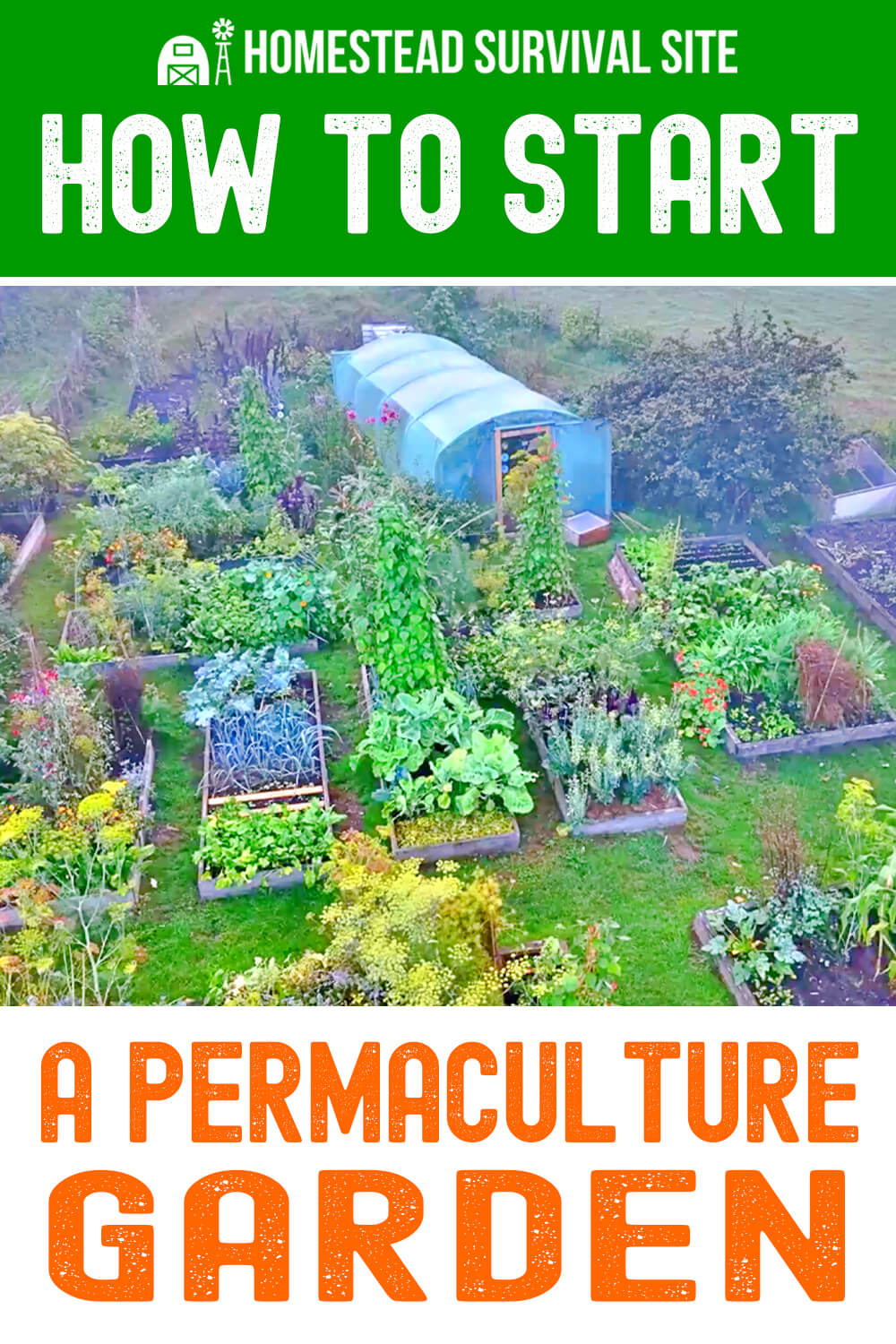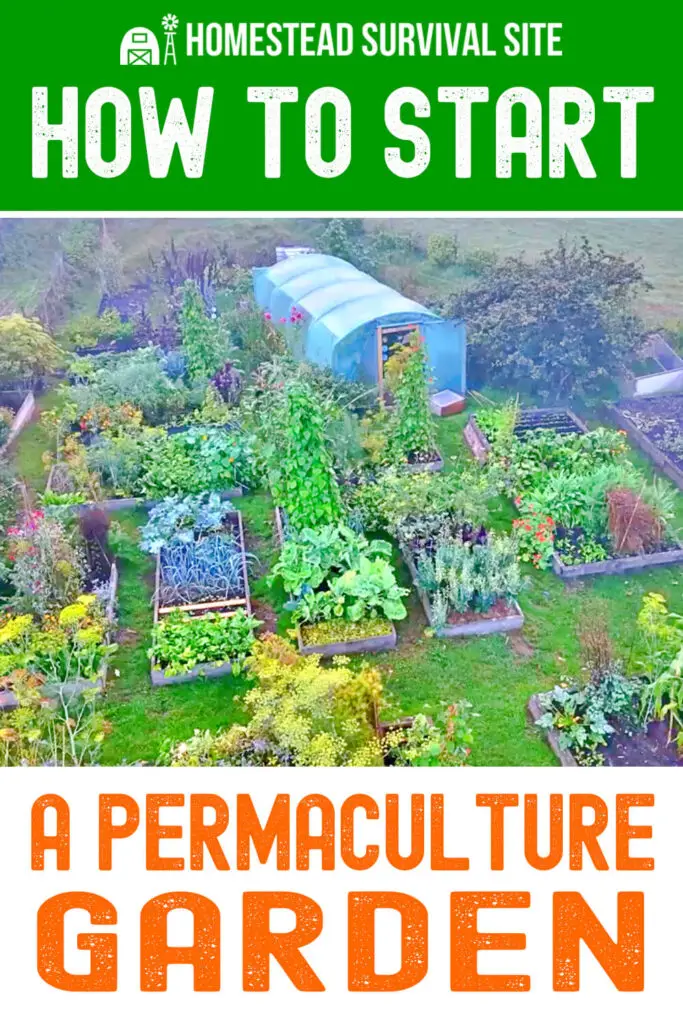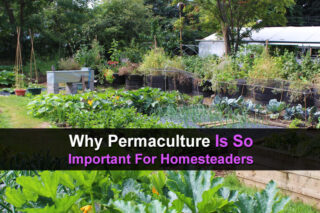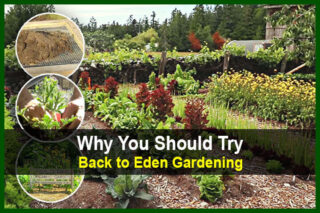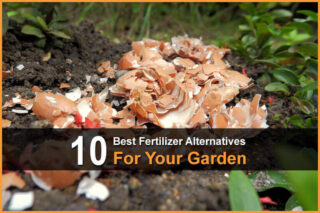Estimated reading time: 6 minutes
If you compost, use companion planting, no-till gardening, and other organic practices, you already know about permaculture philosophy. As a blend of the words “permanent” and “agriculture,” permaculture is a gardening practice that focuses on sustainability and harmony with nature.
This article offers an overview of permaculture and how to incorporate its concepts into your garden. It includes design tips and planting suggestions. You may be surprised to find that you already have elements of permaculture in your garden and can easily add a few more.
Want to save this post for later? Click Here to Pin It On Pinterest!
What Is Permaculture?
Two Australian environmental science academics, Bill Mollison and David Holmgren, coined the word “permaculture” in 1978 as a blend of “permanent” and “agriculture.” The concept was a response to toxic farming practices, and it is based on the need for biodiversity and soil health.
Permaculture gardening uses sustainable, organic techniques that consider the needs of the local environment. Its ethics are to care for the earth, care for people, and take only your fair share of what you produce.
You can practice the principles of permaculture no matter whether you are planting acres of farmland or one raised bed. Here are three primary characteristics of a permaculture garden:
Earth-friendly. A permaculture garden features a diverse ecosystem that is planted and maintained without the use of chemicals and aims for a light environmental footprint.
Sustainable. A permaculture gardener focuses on minimal waste and using resources efficiently.
Low maintenance. An established permaculture garden requires less maintenance than traditional gardens because the chosen plants are often native to the region and support each other, balancing the soil nutrients and microorganisms for optimal soil health.
The benefits of permaculture gardening are numerous, including saving time and money. For example, you can simplify your gardening time and save money on buying new plants and adding fertilizers each season. You also gain the satisfaction of knowing you are nurturing and protecting your space.
So, what's the drawback of permaculture gardening? The only one is the time and effort required to establish one, but the results more than make up for it.
How to Set Up a Permaculture Garden
1. The first step is to study your growing space. Consider the following questions:
- What areas get the most sun and shade?
- Where are the dry and wet areas?
- How and where does the soil drain after rainfall?
- What native plants are already growing there?
- What insects and animals dwell in or visit the area?
2. Select your plants. Do some research on native plants in your area and consider how you can use companion planting to boost plant health, deter pests, and attract pollinators. Think about what you want to harvest – food, flowers, a combination of both.
3. Prepare the soil. Permaculture gardening ideally involves as little digging as possible to avoid unnecessarily disturbing the soil. Helpful soil amendments include kitchen scrap compost, leaves, and grass clippings that you add as a layer of mulch to the top of the soil, allowing it to break down naturally.
4. Create a sustainable garden design. Raised beds can be an excellent component of permaculture design. Forget about row and plant where your garden plants can support each other, providing shade or stability where needed. For example, taller plants can provide shade cover for smaller, sensitive plants. Also, group plants with similar water needs together.
5. Focus on using renewable resources. Permaculture thrives on a continuing loop system with waste reintegrated as resources to ensure the energy efficiency and health of the garden. This practice includes harvesting seeds and using weeds to boost the soil. In addition to using compost and suitable yard debris to nourish your soil and retain moisture, consider using a gravity rainwater barrel and a drip line to water your garden.
6. Keep a garden journal. Establishing a permaculture garden may take some trial and error. Writing down what you do and when you do it will help you learn from any mistakes. Note details like what pests you encounter and what plants need more or less shade as they grow.
7. Get creative. As you learn more about permaculture gardening, you will gain confidence. As this happens, consider underutilized areas of your property that you can use for a garden. These spaces may include edges of a driveway or walkway, an unused part of your patio, or a back corner of your yard.
What Plants Work Well In a Permaculture Garden?
The essence of permaculture gardening is working in harmony with nature. So, incorporating as many local native plants as possible into your design is essential. For the best results, choose plants that thrive in less-than-ideal conditions (like drought or windy conditions) and put down deep roots.
Depending on your location, here is a list of types of plants to consider for your permaculture garden:
Legumes – Legumes (peas and beans) are helpful in permaculture because they extract nitrogen from the air that other plants can use.
Plants with foliage – Plants with a high amount of foliage can provide shade for plants and help the soil retain moisture. They can also help deter weeds, and their dropped foliage can provide a form of living mulch for the garden.
Perennials – For your low-maintenance garden, consider perennial vegetables like garlic, kale, chives, rhubarb, asparagus, and artichokes. Strawberries can also come back year after year and don't have the thorns and brambles of other berries.
Pollinator-friendly plants – Plants that attract bees and butterflies are a hallmark of permaculture gardening. Once again, you need to research native plants in your area, but here are some examples.
- To attract butterflies: parsley, dill, coneflowers, flowers with blooms that offer flat landing pads
- To attract hummingbirds: sage, salvia, lantana, petunia, coneflower, fuchsia, and blooms with fat landing pads.
- To attract bees: petunia, zinnia, snapdragons, salvia, and aster. Avoid double flower plants as that can confuse bees and make it difficult for them to access the nectar.
The Permaculture Research Institute offers a companion planting guide to help you select plants for your garden. This site offers a list of plants to consider for your permaculture garden. You can also check out this video from the Permaculture Education Institute on the Top 10 Permaculture Plants.
Start Small, Learning As You Grow
Starting a permaculture garden does not have to be a large-scale event. You can begin with one raised bid or several containers if you'd like. You can expand your efforts as you learn more about what works well in your area.
For more advice and tips on planning and maintaining your own permaculture garden, here is a list of resources:
- Creating a Pollinator-Friendly Garden by Cornell University
- The Beginner's Guide to Permaculture Gardening by Jeremy Olague
- Permaculture Gardening Handbook by P. Joseph Richards
- Gaia's Garden by Toby Hemenway
- Practical Permaculture by Jessi Bloom and Dave Boehnlein
- Small Scale Permaculture by Richard Bray
- Introduction to Permaculture Gardening: a video by Nicholas Burtner of the School of Permaculture
Like this post? Don't Forget to Pin It On Pinterest!
You May Also Like:

